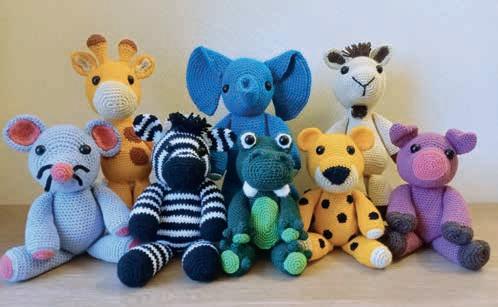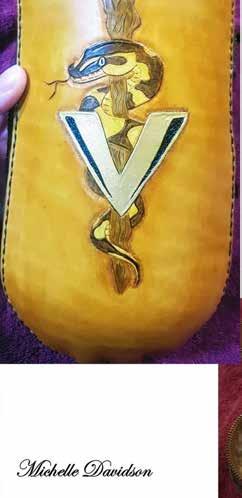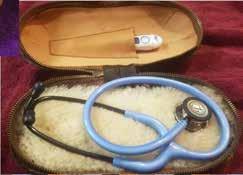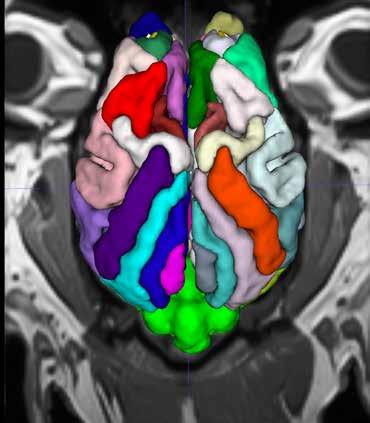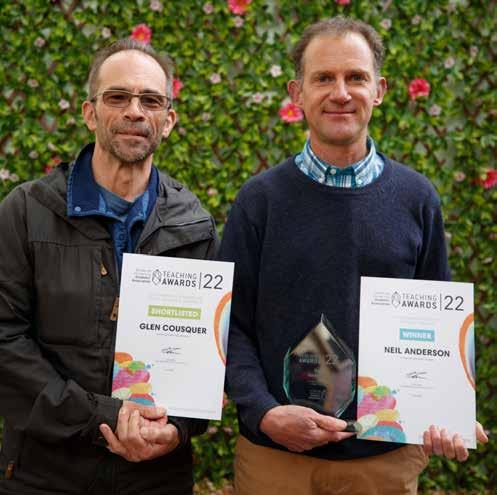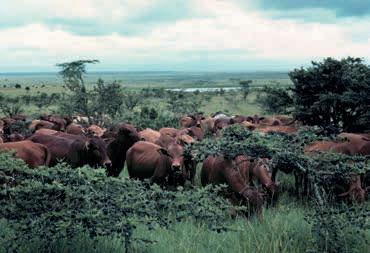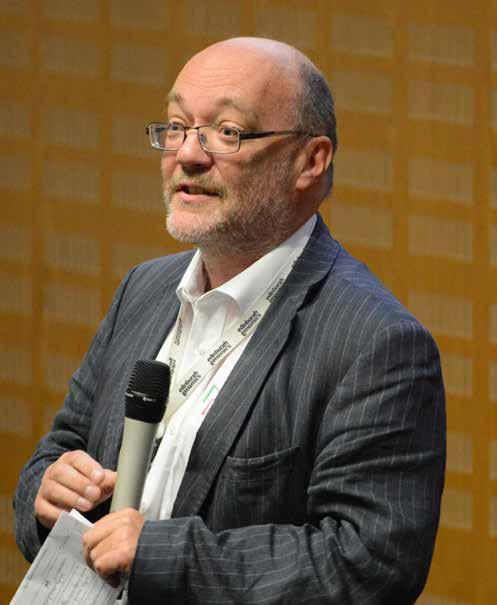
6 minute read
Apr Professor Bruce Whitelaw becomes Director of the Roslin Institute
by thedickvet
I’m delighted to be appointed to lead Roslin in its next chapter of pioneering animal bioscience. I look forward to working with our world-class team, collaborators and supporters in making discoveries to understand and improve animal health, welfare and productivity – and by doing so, impactfully contribute to a sustainable animal agriculture future.
Advertisement
Professor Bruce Whitelaw, Director of the Roslin Institute
In April 2022, Professor Bruce Whitelaw became Director of the Roslin Institute, following more than two years as Interim Director during the most challenging period of the Covid-19 pandemic.
A pioneering scientist who also holds the Chair of Animal Biotechnology at the University of Edinburgh, Professor Whitelaw is ideally placed to lead the research arm of the School, which consists of approximately 500 scientists and professional services staff.
Professor Whitelaw is considered a pioneer in gene editing – making alterations to an organism’s genetic code. His career has focused on the development and application of gene activity in genetically engineered farmed animals.
His research seeks to develop novel ways to tackle infectious disease in animals, evaluate new ways to study potential treatments of human disease, and enhance protein production in animals.
Professor Whitelaw was previously Head of Developmental Biology at the Roslin Institute, a position he held for 12 years. Prior to that, he held research positions at the Biotechnology and Biological Sciences Research Council (BBSRC) Institute of Animal Physiology and Genetics Research, and the Agricultural and Food Research Council’s Animal Breeding Research Organisation.
He holds a BSc in medical microbiology from the University of Edinburgh and a PhD in molecular biology from the University of Glasgow. He is also a member of the Board of Directors of Roslin Technologies and a Fellow of the Royal Society of Biology.
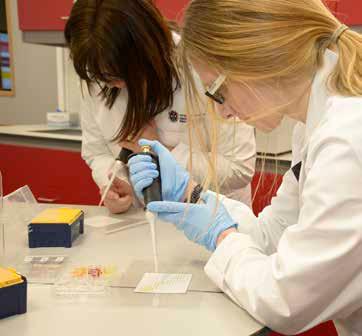
Pupils use big data to monitor bee health
In summer 2022, pupils and teachers worked with scientists from the Roslin Institute to explore how to use data to predict the health of their school’s honeybee colony.
The project, led by our Public Engagement team, helped establish a smart monitoring system with pupils at Kelso High School to collect data from their apiaries every five minutes, every day, for several weeks.
Real-time data from the hive provided information on temperature, humidity, and sound frequency in the colony. The pupils also analysed bees to test if they were affected by a common parasite, called Nosema, by using DNA and microscope analysis, with support from Roslin scientists and the Public Engagement team.
Their experiments enabled the pupils to better understand honeybee health and the role of science in beekeeping, so that they can better manage their hives.
This project was funded by the Royal Society Schools Partnership Grant scheme. Science and Advice for Scottish Agriculture (SASA) were also partners.
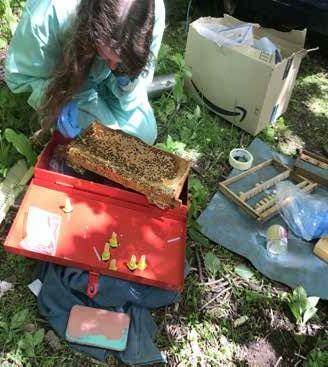
Campus to host secondary school with focus on STEM
Anew Science, Technology, Engineering and Mathematics (STEM) Centre of Excellence secondary school will be built at Easter Bush by 2026. The University of Edinburgh and Midlothian Council have agreed plans to build the school, which will replace nearby Beeslack Community High School.
The facility will address a projected increase in pupil numbers from expanding communities in local areas, accommodating 1200 pupils, with capacity to expand to 1600. The facility will also have a dedicated learning space for children with additional support needs and community facilities appropriate for local needs, with indoor and outdoor sports facilities.
The building will be designed to have very low carbon emissions. Its green building standards and central location, which will encourage cycling and walking, will help the council towards its goal of becoming carbon neutral by 2030.
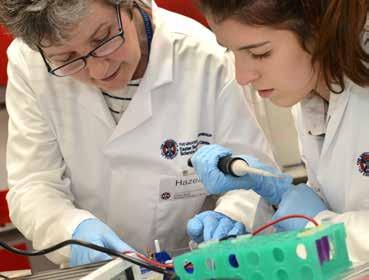
Initiative to inspire future women in STEM
In early 2022, women working in a variety of science roles across the Easter Bush Campus helped to raise awareness and aspirations among young women regarding careers in science.
The project group, led by Dr Kelly Blacklock, Senior Lecturer in Small Animal Surgery, developed a programme of events and resources to promote the diversity of roles available, and highlight that a career in science is open to anyone, regardless of gender.
The group, working with the campus’ Easter Bush Science Outreach Centre, delivered interactive, live online and face-to-face sessions to pupils from primary schools across the Lothians and Fife, enabling more than 250 children an opportunity to meet and talk to women in science and learn more about career opportunities in STEM.
The group also established a website to highlight that a career in science can be fun, challenging, rewarding and accessible to everyone. This site features short videos from women in a variety of science roles across the campus, speaking about their career paths and what they love about their jobs. It also contains a gallery showcasing women, past and present, from different backgrounds and in varied science roles, highlighting their contributions to the world.
3D model helps vets learn to sample dog spinal fluid
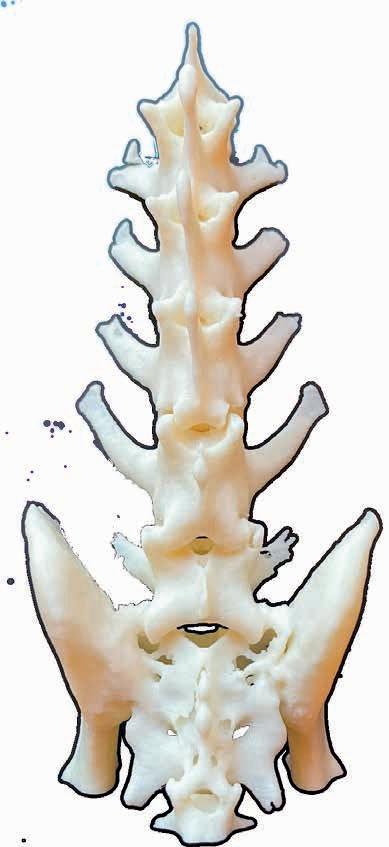
Anewly developed 3D model could help vets master the difficult procedure of sampling spinal fluid from dogs.
Experts at the School, in collaboration with the Edinburgh College of Art, have developed a model that replicates a healthy dog’s lower back, using source CT scans of healthy dogs from our image archive. This enabled them to produce a life-sized and anatomically precise 3D-printed model of the lumbar vertebrae – bones in the lower back – and pelvis.
The plastic structure is fitted with synthetic materials and a system of fluids to mimic the lumbrosacral vertebral column, or lower back, of a live dog, and vets can use it to draw spinal fluid as they would in a living patient – enabling an efficient, lowrisk approach to mastering a technically difficult procedure. The final model is placed inside a dummy dog, which can be positioned in exactly the same way as patients undergoing this procedure. Vets specialising in neurology could use the model to practise the procedure, commonly used in dogs with neurological disease to aid the diagnosis of auto-immune and infectious conditions, some types of cancers and other forms of spinal cord disease.
Their design is available to all, enabling future studies to develop or adapt it for similar or alternative procedures.
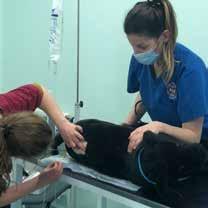
Art of a Vet Student competition winners
The School’s annual art competition for undergraduate veterinary students, ‘Art of a Vet Student’, resulted in four joint winners in the 2021-22 academic year, all of whom have had their art exhibited in the Vet School building.
Huge congratulations to Emily Munro, Zoe Insley, Kat Miller and Michelle Davidson, the four joint winners of this year’s competition.
The initiative, which grows in popularity each year, celebrates the artistic talents of our undergraduates and encourages them to express their creativity alongside their studies.
The competition is organised by the Dick Vet Student Union in conjunction with the School, and gives students a chance to express what being a vet means to them.
You can view all the entries to this year’s competition on padlet: https://padlet.com/dickvetsu/ykr0dv8syhj85khv
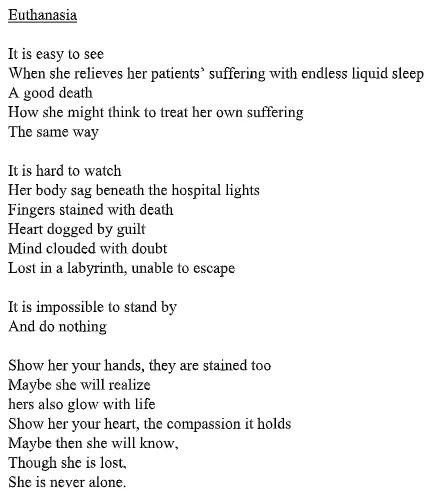
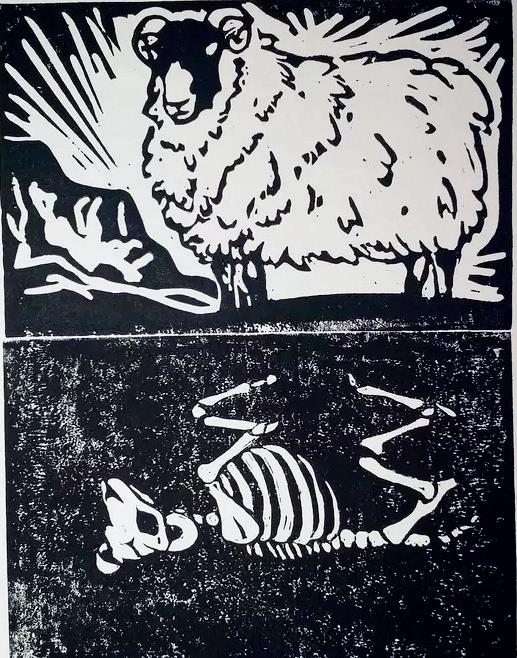
Clockwise from left: Poem by Kat Miller; “This too shall pass” linoprint by Emily Munro; leather stethoscope case by Michelle Davidson; Knitted animals by Zoe Insley.
